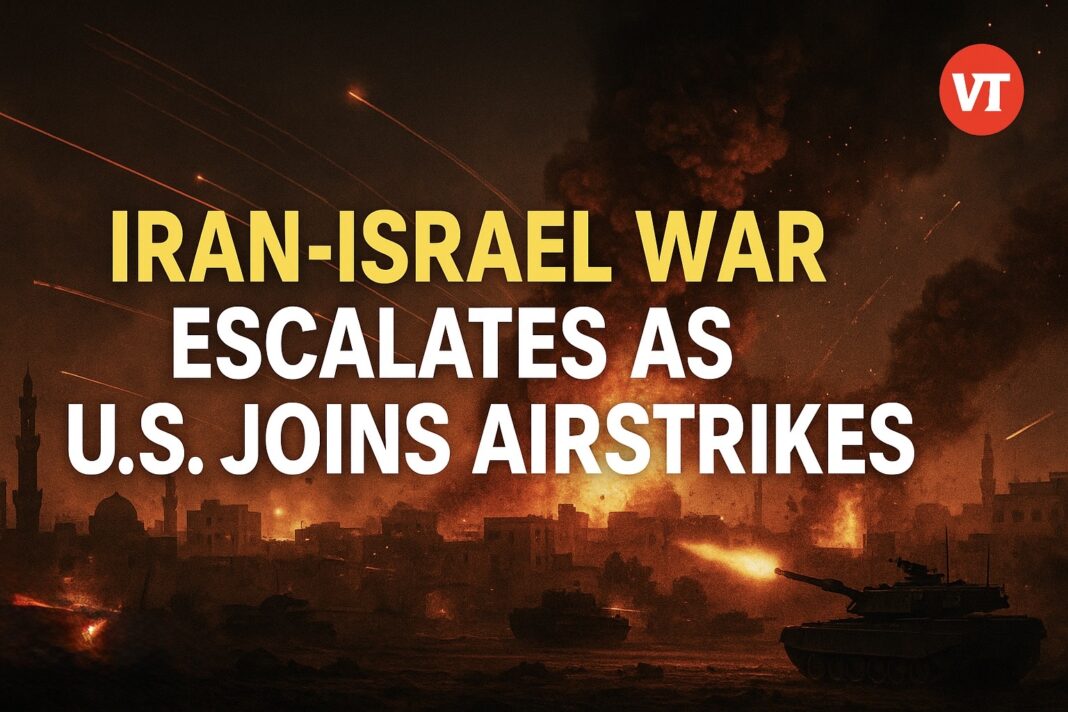In the escalating Iran-Israel conflict, now in its second week, intense military exchanges and U.S. involvement have heightened regional tensions.
Why it matters:
The conflict is drawing in global powers, particularly the United States, raising fears of a broader Middle East war and destabilizing global diplomacy efforts on nuclear non-proliferation.
State of play:
- Iran has vowed retaliation against the U.S. for airstrikes on its nuclear facilities at Fordo, Natanz, and Isfahan.
- Ali Shamkhani, adviser to Iran’s Supreme Leader, warned that Tehran’s nuclear program will persist, hinting at future surprises and asserting Iran’s right to defend itself.
- Israel’s military launched further airstrikes on Tehran following Iranian missile attacks that triggered air raid sirens in Tel Aviv and Jerusalem.
- The Iron Dome intercepted many missiles, but casualties and damage were reported across Israeli cities.
Driving the news:
President Donald Trump, in a post on Truth Social, claimed “monumental damage” from the June 21 U.S. strikes on Iranian nuclear facilities, stating, “Obliteration is an accurate term.” According to Reuters, the operation involved over 125 aircraft and Tomahawk cruise missiles.
ABC News reported that the operation featured seven B-2 Spirit stealth bombers and coordinated targeting efforts. Satellite images from Maxar Technologies, cited by The Washington Post, show significant surface-level damage at the Fordo site.
Flashback:
Israel’s “Operation Rising Lion,” launched on June 12, aimed to degrade Iran’s nuclear capabilities. Iranian Foreign Minister Abbas Araghchi condemned the U.S. support as a “grave violation” of international law.
By the numbers:
- Over 430 Iranians killed, including 263 civilians, since the start of Israeli strikes on June 12.
- 24 Israeli civilians have died, with more than 1,272 injured, including 32 in a missile strike on Soroka Medical Center in Beersheba on June 19.
Between the lines:
Israel claims “full aerial superiority” over Tehran, having destroyed a third of Iran’s missile launchers and killed multiple senior figures in the Islamic Revolutionary Guard Corps, including Maj. Gen. Hossein Salami, according to the Institute for the Study of War.
Iran’s “True Promise 3” missile campaign targeted Israeli bases and nuclear assets. NBC News reported Iran has explicitly threatened U.S. military bases and Israel’s Shimon Peres Negev Nuclear Research Center.
What they’re saying:
“Mr. Trump, the gambler, you may start this war, but we will be the ones to finish it.” — Ebrahim Zolfaqari, spokesperson for Khatam al-Anbiya military HQ, via Tasnim News Agency
“Even assuming that the facilities are completely destroyed, the game is not over.” — Ali Shamkhani, adviser to Supreme Leader Khamenei, on X
International response:
U.N. Secretary-General António Guterres and NATO leaders urged restraint. Iran demands a halt to Israeli strikes as a precondition for nuclear diplomacy. Trump has dismissed G7 requests for de-escalation, according to The New York Times.
Yemen’s Houthi rebels threatened U.S. naval assets in the Red Sea, and Hezbollah reiterated support for Iran, though it has so far avoided direct engagement, according to The New Arab.
Zoom out:
Damage to Iran’s nuclear infrastructure remains partly unknown. While surface imagery confirms destruction, sites like Fordo were built deep underground to resist such attacks. Estimates of Iranian casualties vary, with independent counts significantly higher than official state numbers, NBC News noted.
What’s next:
With nuclear diplomacy stalled and threats escalating, the region faces the risk of prolonged war. Trump’s insistence on dismantling Iran’s nuclear capability and Tehran’s continued defiance signal an uncertain path forward for peace.

